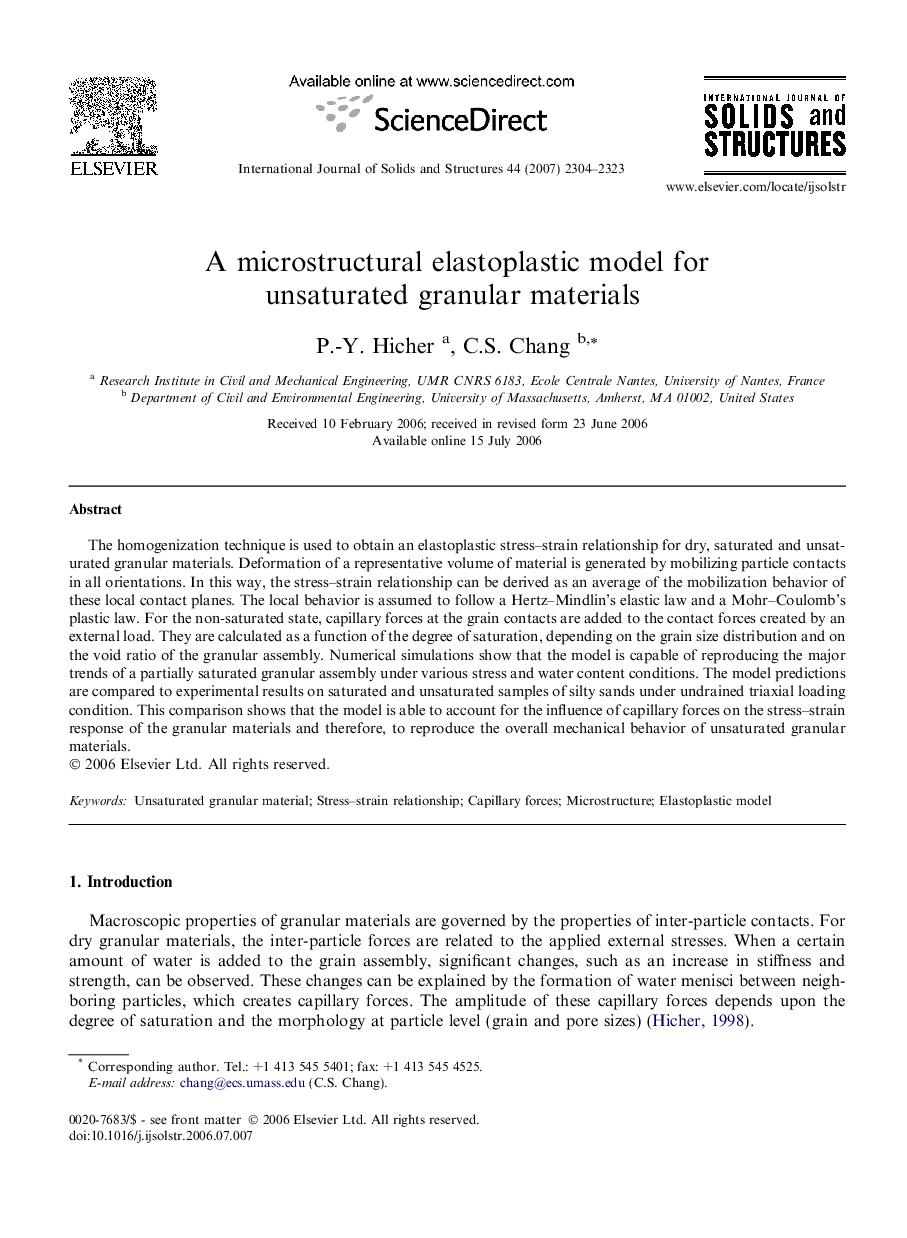| Article ID | Journal | Published Year | Pages | File Type |
|---|---|---|---|---|
| 279908 | International Journal of Solids and Structures | 2007 | 20 Pages |
The homogenization technique is used to obtain an elastoplastic stress–strain relationship for dry, saturated and unsaturated granular materials. Deformation of a representative volume of material is generated by mobilizing particle contacts in all orientations. In this way, the stress–strain relationship can be derived as an average of the mobilization behavior of these local contact planes. The local behavior is assumed to follow a Hertz–Mindlin’s elastic law and a Mohr–Coulomb’s plastic law. For the non-saturated state, capillary forces at the grain contacts are added to the contact forces created by an external load. They are calculated as a function of the degree of saturation, depending on the grain size distribution and on the void ratio of the granular assembly. Numerical simulations show that the model is capable of reproducing the major trends of a partially saturated granular assembly under various stress and water content conditions. The model predictions are compared to experimental results on saturated and unsaturated samples of silty sands under undrained triaxial loading condition. This comparison shows that the model is able to account for the influence of capillary forces on the stress–strain response of the granular materials and therefore, to reproduce the overall mechanical behavior of unsaturated granular materials.
